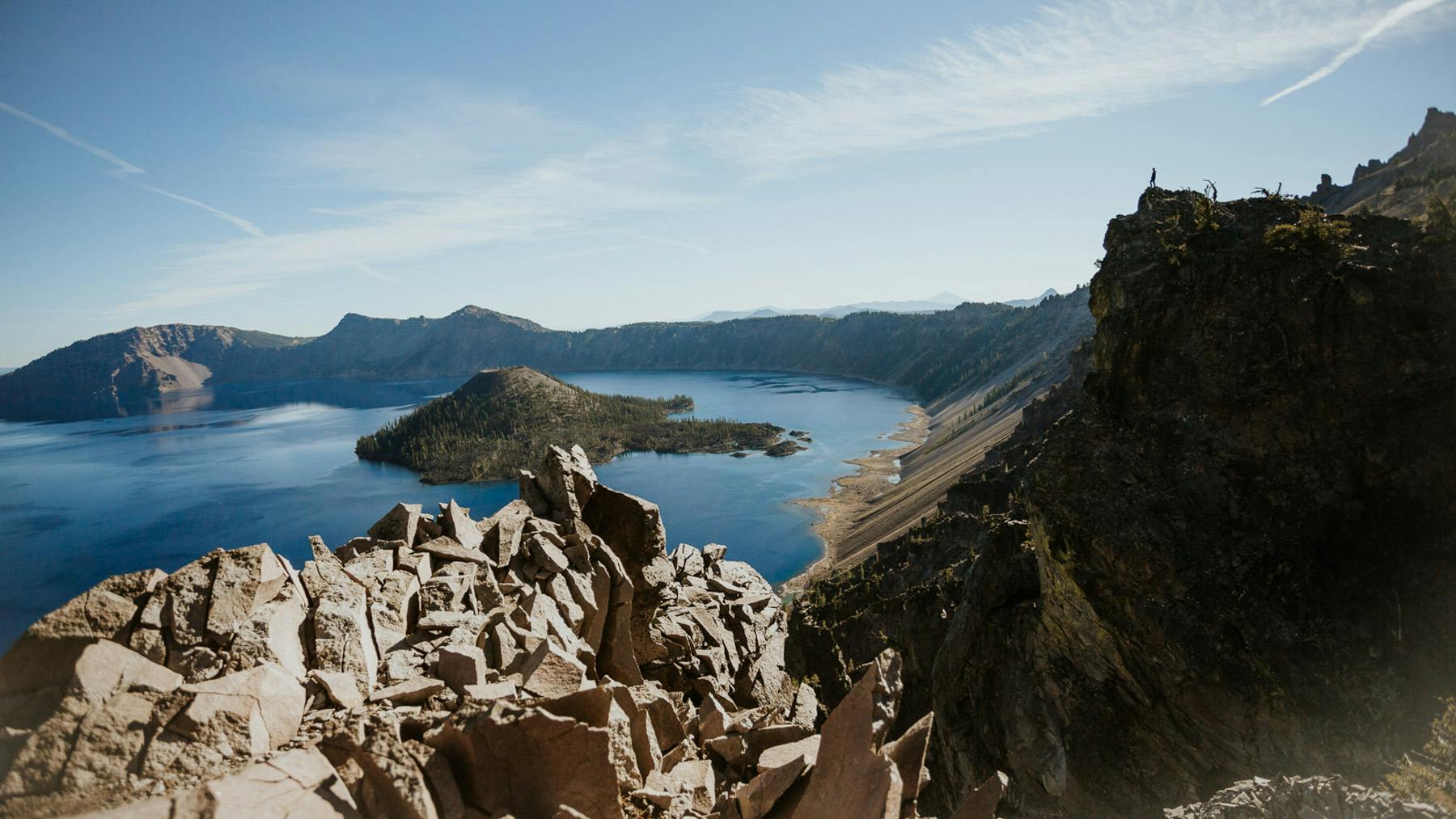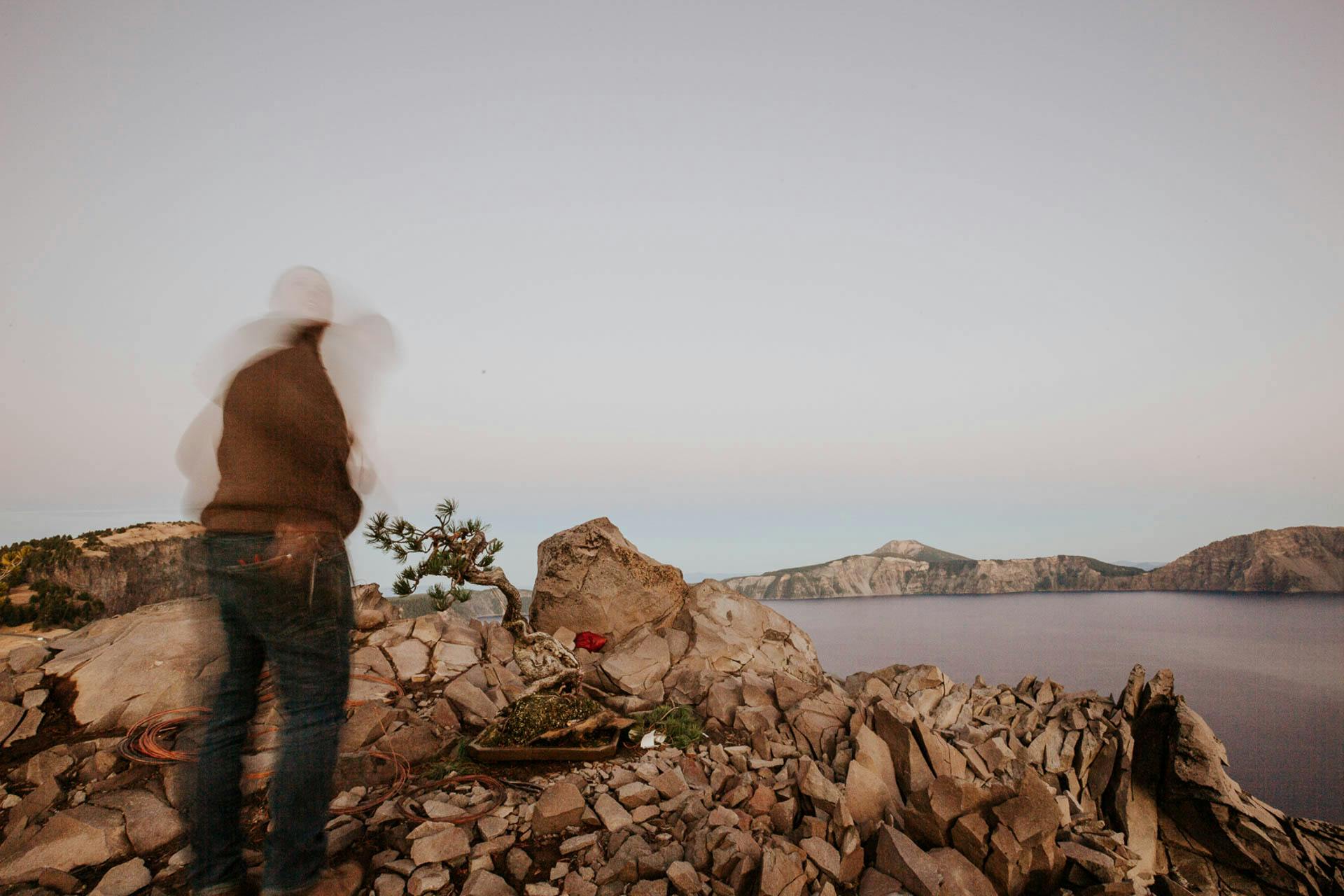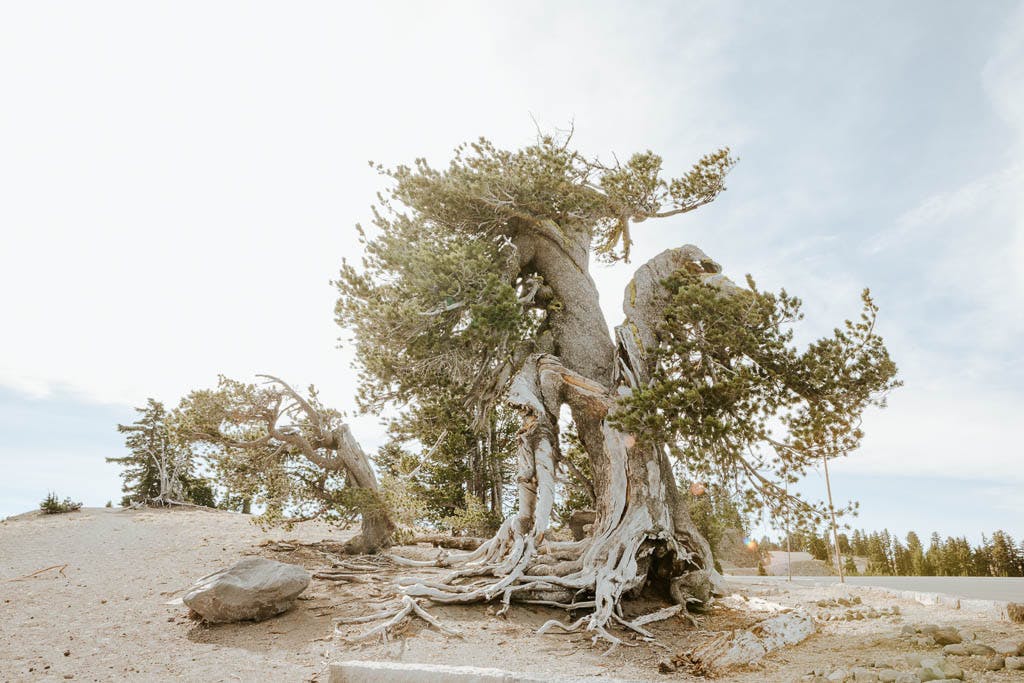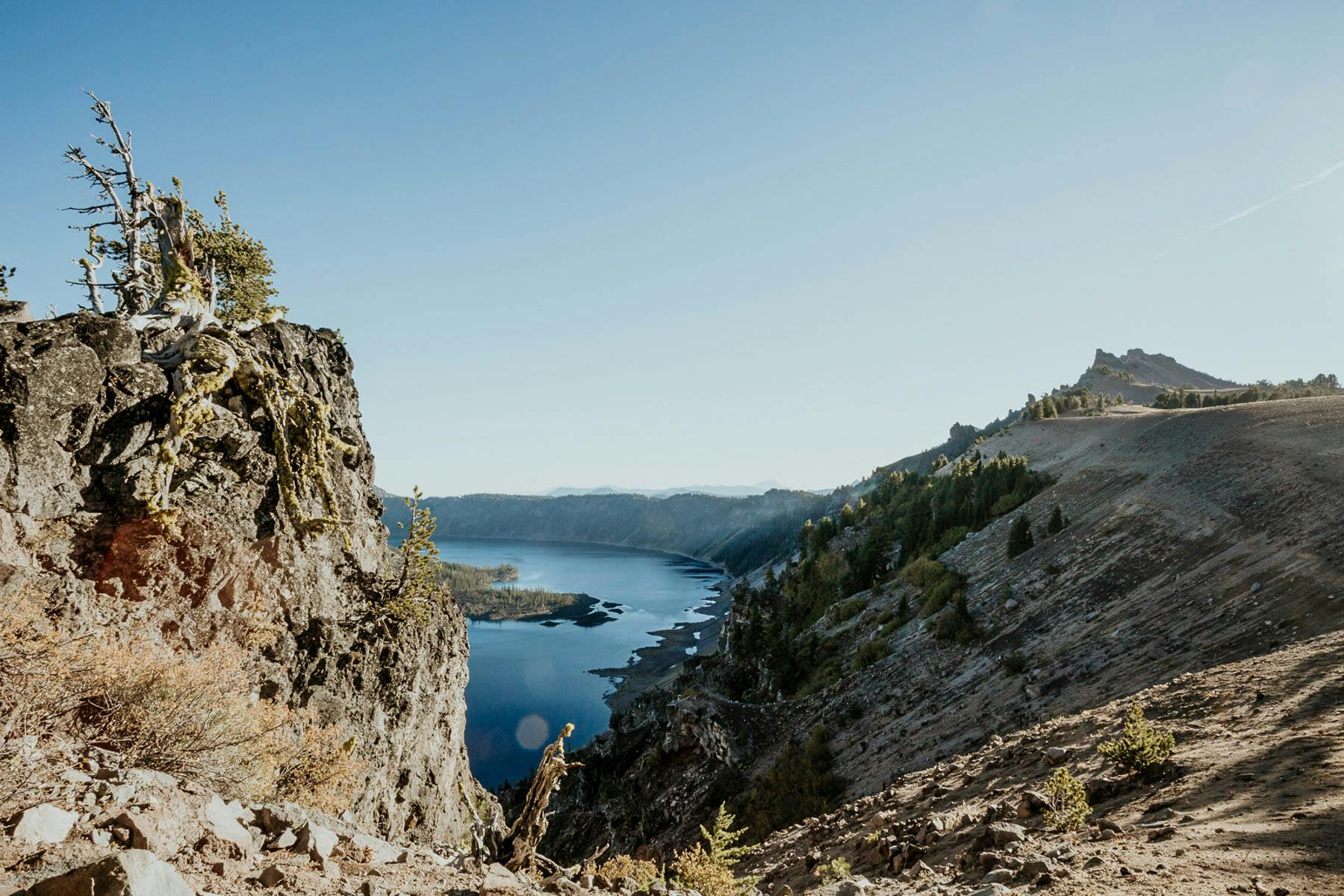Crater Lake National Park
Oregon, USA
2020
Caldera
The formation of a caldera requires violence on an unprecedented scale. It is a destabilization of landmass — an implosion of the earth that creates a perpetual impression of that chaos. To witness and work in such an environment is to understand how such timeless destruction continues to inform the tortured existence of the tree.
Crater Lake is a geological anomaly that tempers the senses with its beauty, while acting on its admirers with some of the harshest and most erratic weather conditions an alpine region can experience. Caldera is an embedded exploration of Crater Lake that seeks to understand the influence of harsh environmental conditions on the interpretation of tree form as it is filtered through the human experience on a sensory level.

Intense wind and arid conditions manifest as abstract, intimate shapes over the course of time.

The tree has long been the great communicator, connecting the mysteries of the land in which it grows to those who witness the scars of its time spent on earth. Caldera explores the function of the human as the environmental interpreter and great influencer, leaving the tree to describe this introduction of the human element into the equation of tree and land. The White bark pine becomes the orator of this complex intertwining of forces.

At 7000 feet, the parched, rocky environment made it challenging to adapt or find any feeling of ease to work.
Full exposure to the harsh environmental conditions on cliff’s edge shifted the physicality of the work and tested a new level of durability in the tree. Emboldened to push the tree beyond prior boundaries furthered the design and execution beyond a response in the built environment. As the tree presented a greater threshold for styling, the resulting design became a manifestation of native context.

"It was my first intentional, sensory collaboration with the environment as a design influence for a tree."

The nearby mother tree, Crater Lake's grand gesture of ancient in the form of an undying White bark pine stands resistant to all influences that act on it. The nuanced bends and shapes of this ancient tree echo the physical response to the effects of the caldera, if only for a fraction of the time held by the roots of this pillar native.

As these trees fight to endure the constant elements and harsh environmental conditions, they are also suffering against the proliferation of White pine blister rust, a fast spreading invasive disease that is putting this pillar species at high risk for extinction. While Caldera is an effort to interpret, understand and record the aesthetic of these trees, it is also a call to acknowledge the further human efforts needed in order to preserve them.





